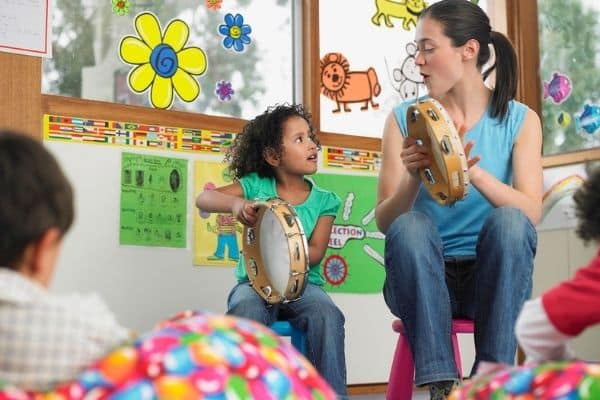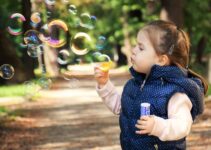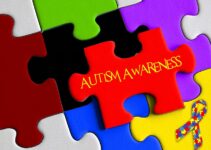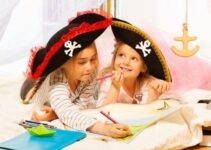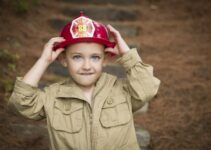Music and preschool songs are major fundamentals for young children. This is because kids of this age make connections significantly through music and song.
Being an early childhood educator with several years of experience and one who specializes in the learning and development of children ages birth to 5 years of age, I have seen, first hand, the incredible learning implications and developmental benefits that music holds for young students.
In the preschool classroom, music is incorporated into almost every area of learning. From hello songs and goodbye songs that help set the routine for the school day to transition songs that help kids successfully adapt to a different subject or activity time in the classroom, the importance of music cannot be overemphasized. So it goes without saying that music should be used in a child’s home, as well!
Table of Contents
The Benefits of Singing With Your Preschool Child
#1. Academic Development
There is truly no end to the academic development that can take place when singing with your child. Several studies have proven that there is a direct link between music and your child’s brain.
Music arouses the auditory receptors in a child’s brain and makes the creation of neural connections, also called synapses, explode with activity. When students are being taught a new concept such as the weather or seasons, construing this information into song will make kids much more likely to remember it. This is because singing directly impacts memory development.
Preschool teachers incorporate songs for almost every subject they are teaching. Many begin the day with fun songs to signal the beginning of the school day. Repetition and routine are vital to the overall academic development and well-being of young children.
When teachers create a routine using songs that are sung every day, students grow more comfortable with the environment they are learning in, and they can retain information much more readily. Parents can use songs similarly at home.
#2. Gross and Fine Motor Development
Almost every children’s song comes equipped with actions or fingerplays for children to perform while they are engaging in the music. This allows kids to express themselves and their learning in a physical form, which deepens the connections their brains are making with the information being learned.
Action songs such as “If You’re Happy and You Know It” or “Head, Shoulders, Knees, and Toes” are excellent examples of preschool songs that get kids moving. This not only benefits a child’s memory and neurological development but also their physical development.
Through action songs, students practice hand-eye coordination, balance, fine motor mobility, and self-expression through dance. All of these are essential developmental goals for young children.
#3. Reading/Phonemic Awareness
Preschool songs are full of important concepts relating to the development of early literacy and phonemic development. When students sing songs, they are consciously taking in several different letters and word sounds. They also practice word pronunciation and phonetics, which are essential building blocks to overall literacy.
Rhyming songs teach and introduce students to letter sounds as well as the practice of rhyming and being able to identify words that rhyme. Little learners greatly enjoy rhyming preschool songs because they often create a fun way to identify rhyme and tune.
My Absolute Favorite Preschool Songs
Are you looking for some fun and educational songs that you sing along with your child that will help foster all of these great developmental benefits and more? Here is a list of my top favorites.
#1. Five Little Monkeys

I absolutely love to sing the classic preschool song “5 Little Monkeys” with my students because there is so much more to it than meets the eye (or ear!).
It teaches the mathematical concept of subtraction in a fun and child-friendly way by allowing students to predict and determine how many monkeys are left on the bed after one falls off.
Another thing I love about this particular piece is its versatility. It can easily be performed as a fingerplay in which students will be able to visually see the process of subtraction taking place with the props that the teacher has prepared, all of which better illustrate the concept as a whole.
This song can also be easily adapted to fit any theme or particular subject that a parent or teacher is presenting. For example, “Five Little Monkeys” can easily be adapted into a collection of ocean-related preschool songs by simply changing the lyrics to “Five Little Turtles Swimming in the Reef.”
The rhythm and harmonic timing of this piece are greatly appealing to preschoolers and make for an excellent addition to any learning topic.
#2. Baby Shark

I think we have all heard of this wildly popular children’s song, which became an internet sensation overnight. Now it is so popular among preschoolers that it has led to its very own television show!
So, what makes this Baby Shark song so popular among little learners, and why can’t they seem to get enough of it? It all has to do with the rhythm, timing, and repetitive nature of the piece itself. Preschool students thrive on repetition, so the fact that Baby Shark is continuously repetitive both in word and melody makes it extremely appealing to kids.
This song has several developmental benefits that are worth pointing out. First, adults can use it to help children learn about size differentiation as well as age differences. It can also be used to introduce simple addition as well as scientific learning.
“Baby Shark” comes with very easy-to-learn motions that students can use with it. This makes learning more concrete for little ones and allows them to express themselves physically, which is so important to a child’s overall ability to focus and concentrate.
#3. The Wheels on the Bus

“The wheels on the bus go up and down, up and down, up and down. The wheels on the bus go up and down, all through the town.”
Just looking at the first verse of this widely known and popular preschool song, what are two distinct features that you notice about it? If you guessed repetition and rhyming, you are correct! It is very repetitive, making it easy for preschoolers to follow and make the connections they need to within the piece.
While adults will simply sing, not paying attention to the words being used, a child is taking in each word and action and creating a new mental connection with it. For example, when you sing the first verse of the song and then have your child move their body in an up and down fashion, they are learning about what riding on a bus is like and making that mental connection.
Kids crave repetition in their lives, and they need it to successfully learn new concepts and grow developmentally. So, songs such as “The Wheels on the Bus” can never be sung too much.
#4. Old MacDonald Had a Farm

This classic preschool song has been around for centuries. Dating back to the early 1700s, this song has been used by students, teachers, and parents alike throughout the generations.
“Old MacDonald Had a Farm” is an excellent preschool classroom song for several reasons. By singing it, children can practice difficult word pronunciations and letter sounds in a fun way. It also promotes the mental connection between animals and the sounds that they make.
Animal songs such as this one also tend to be quite predictable, which is a great asset for little learners. This gives learners the ability to feel more in control of the piece because it is easy to learn and memorize. Once little ones have it memorized, they will greatly enjoy practicing their ease in recalling it and take pride in their ability to perform it on their own.
#5. The Hokey Pokey

This classic preschool dance song is such a great addition to any preschool classroom or home. The benefits of this piece relate mainly to motor development and coordination.
“The Hokey Pokey” is designed to help kids develop and practice several gross motor functions in a fun way. When students need to put their left foot in or out, they are practicing balance and coordination as well as learning to differentiate between their left and their right.
The versatility of this song is also very appealing to students because it creates a wonderful and exciting space to play and promote self-expression.
#6. Five Green and Speckled Frogs

This fun preschool tongue twister is always a favorite among young children, and despite its silly nature, it is actually quite rich with educational opportunities and early literacy development skills. What I love about “Five Green and Speckled Frogs” is its immense versatility in being able to be performed both as a finger play and on a visual display board.
This song allows for direct child interaction when it is associated with tactile pieces such as a magnetic board with five speckled frogs or five little frog stickers to go on your child’s fingers. This brings it to life for kids, and it allows them to be able to make visual representations of the subtraction taking place throughout.
The longer words presented in this song, such as ‘speckled’ and ‘delicious’ are words that include multiple phonemes or letter sounds, which will greatly benefit your student’s early literacy development. The rhyming presented throughout this piece also helps kids to make associations between several rhyming words such as ‘frog and log’ as well as ‘pool and cool.’
#7. If You’re Happy and You Know It

Kids love this classic, preschool action song, and the learning benefits hidden within the song itself will surprise you. First, when kids sing “If You’re Happy and You Know It” and engage in the actions, they are learning several fine and gross motor skills such as clapping, stomping, and balance. Incorporating these actions by using a fun song will encourage students to move in ways that they may not use as often in everyday life, thus helping them develop their overall coordination.
Another learning benefit that I love about this song is the association that children can make with their feelings and emotional responses. “If You’re Happy and You Know It” works to introduce students to different feelings such as happiness, sadness, fear, and anger while demonstrating common emotional responses that kids may exhibit when they encounter these feelings in daily life. It also helps children understand that it is okay to have these feelings as you teach them about appropriate emotional responses.
#8. Head, Shoulder, Knees, and Toes

Preschoolers have adored this song for decades, and it is a staple in almost all early childhood classrooms to date. This exciting action song gets preschoolers moving and helps them identify different parts of their bodies and become familiarized with them while practicing essential gross motor skills such as balance and hand/eye coordination.
When kids start singing “Head, Shoulders, Knees, and Toes,” they may begin slowly and gradually, increasing the speed of it as it progresses. This is always a fun and exciting challenge for kids to undertake, and it is an excellent activity that can be used for brain breaks at home or in the classroom.
#9. The Itsy, Bitsy Spider

This classic preschool song is bound to be a favorite in almost all homes. The movements associated with this action song are excellent for engaging kids’ fine motor development. It can also be used to teach children about directionality such as up and down. When kids sing and link their actions to specific parts of the song such as “climbed up the water spout” and “down came the rain,” they are learning, through real-life situations, about the directions of up and down.
This song is a perfect way to encourage students to engage at home or during school while also having fun and interacting with a familiar and favorite song.
What are Super Simple Songs?
Super Simple Songs is a song creation company known for simplifying nursery rhymes and other classic children’s songs while adding engaging animation and upbeat music.
Many of their videos can be found online via YouTube, and they are highly recommended by early childhood educators, including myself.
This collection of unique songs includes seasonal songs such as winter songs, spring songs, counting rhymes, circle time songs, and color songs, all of which are geared to the learning of young kids and simplified for easy repetition and listening.
What are the Best Nursery Rhymes?
It comes down to looking at the content of the song and the learning implications it will have on your child. Let’s look at a few different options and dig into the learning impacts they have on little learners.
First, let’s look at “Twinkle, Twinkle, Little Star.” This is often one of the first songs that a parent will sing to their own kids. Kids love this piece because of the soothing melody and rhyming used throughout. While it does not necessarily have many academic learning impacts, it is an excellent song to introduce kids to rhyming as well as to be a soothing lullaby for bedtime.
Next, consider “The Itsy Bitsy Spider.” This song has been passed down through the generations much like many of the nursery rhymes have been. It includes actions that focus greatly on fine motor development and hand-eye coordination to help get kids ready for the many fine motor actions they will take part in throughout their time at school. Finger plays such as this help children develop fine motor skills and, at the same time, learn the concept of cause and effect.
Lastly, “Row, Row, Row Your Boat” is a fun song for kids with many rhyming connections. It is a classic that can teach children the pronunciation of more eloquent word patterns thus aiding in the overall development of their speech.
Overall, no nursery rhyme is particularly “the best.” However, from an early childhood educator’s point of view, these three are among the top on the list. Both parents and teachers need to continue with the legacy of these rhymes so that they can continue to benefit future generations.
In Review…
I hope this list of teacher-recommended preschool songs can give you a great start on introducing singing and music into your child’s everyday life. Singing doesn’t just have to be found in the classroom. Children will find great joy in sharing the songs they have learned with you at home.
By singing and dancing with your child, you make a lasting and emotional impact that will remain with them throughout their entire lives. Preschool songs help you make it fun.

